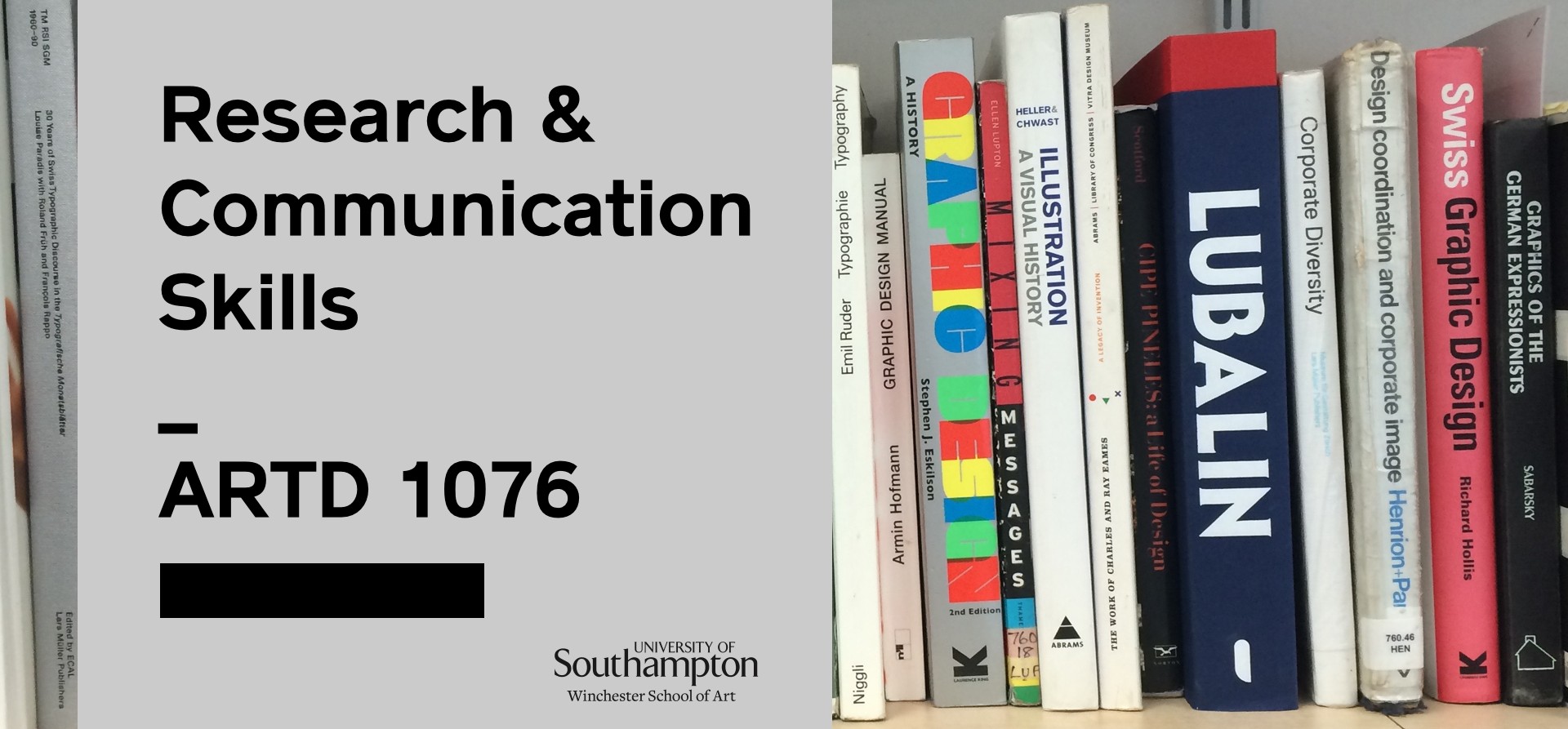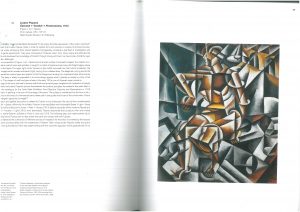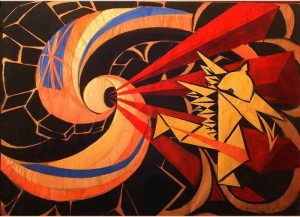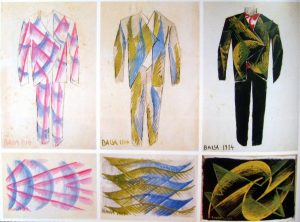Futurist painting “Figure + Art +space” oil canvas, 125 x 107cm
Date: 1910-1913
Artist/painter: Liubov Popova
I chose this painting of Liubov Popova called Figure + air + space. This painting was produced in Russia, St Petersburg during the movement called futurism. The artwork was supposed to portray a nude painting of a woman in a futuristic state. What influenced him the most was the movement of technology; vehicles and big motor machines such as cars, trains and weaponry were very popular throughout the era which effected most of the artists’ work.
As shown he had chosen an unusual colour palette for a nude portrait. In the painting he had selected cold dark metallic pigment of brown and bluish and purpling grey which symbolizes the weight of the machinery produced by its powerful volumetry. In the centre displays the woman’s body parts merging with the surroundings, which stands out because of the colouring of the flesh.
Futurist back then was a revolution of people who supported the violence and war for they believed that it is a sign of brotherhood between men and moving forward with new inventions to the future. With this they advertised war through their work.
This relates to the artist and sculptor Giacomo Balla. As part of a futurist Balla has created his work in the similar style as Luibov, although instead of using dark colour to symbolise the moving revolution he used the complete opposite. The painting shows vibrant primary colours that speaks in as violent image; it shows a soldier (who is translated into shapes) shooting of to the distance and a flag is spiralling into the bullet. This signifies conflict between countries which he attempted to portray to the public.
Artist: Giacomo Balla
Painting title: light, movement and speed
From Italy
Image from: https://theartstack.com/artist/giacomo-balla/war-1916
The ‘Anti-Neutral Suit’
Artist: Giacome Balla
Image from: https://www.pinterest.co.uk/pin/492722015455999567/
By looking more into this artist I later on Balla created a design of the Anti-neutral suit in 1914. The suit was a juxtaposing the suit’s materiality against that of some present day anti neutral outfits. The suit represented not, in fact, definitively peaceable or classless but rather violent expansionist.
His work has really interested me into looking more into the First World War and how the futurist came to be and how his intricate paintings of war actually inspired people to become futurist.
Article, written by: H Social Sciences K Law
Date: 07 Sep 2017
Source: https://kar.kent.ac.uk/id/eprint/62620
Although despite the purpose of his work, I think that his paintings were very live and vibrant. He was able to translate his expression into his work. He did not use any material for work with but instead he used his aesthetic imagination to express the revolution of the nation through speed, time and space. As a fashion student I think that the patterns that he produced were abstract and different from what the used to have during that time. The suit he designed interest me with millions of question on why he decided to translate his paintings and patterns into a garment.



